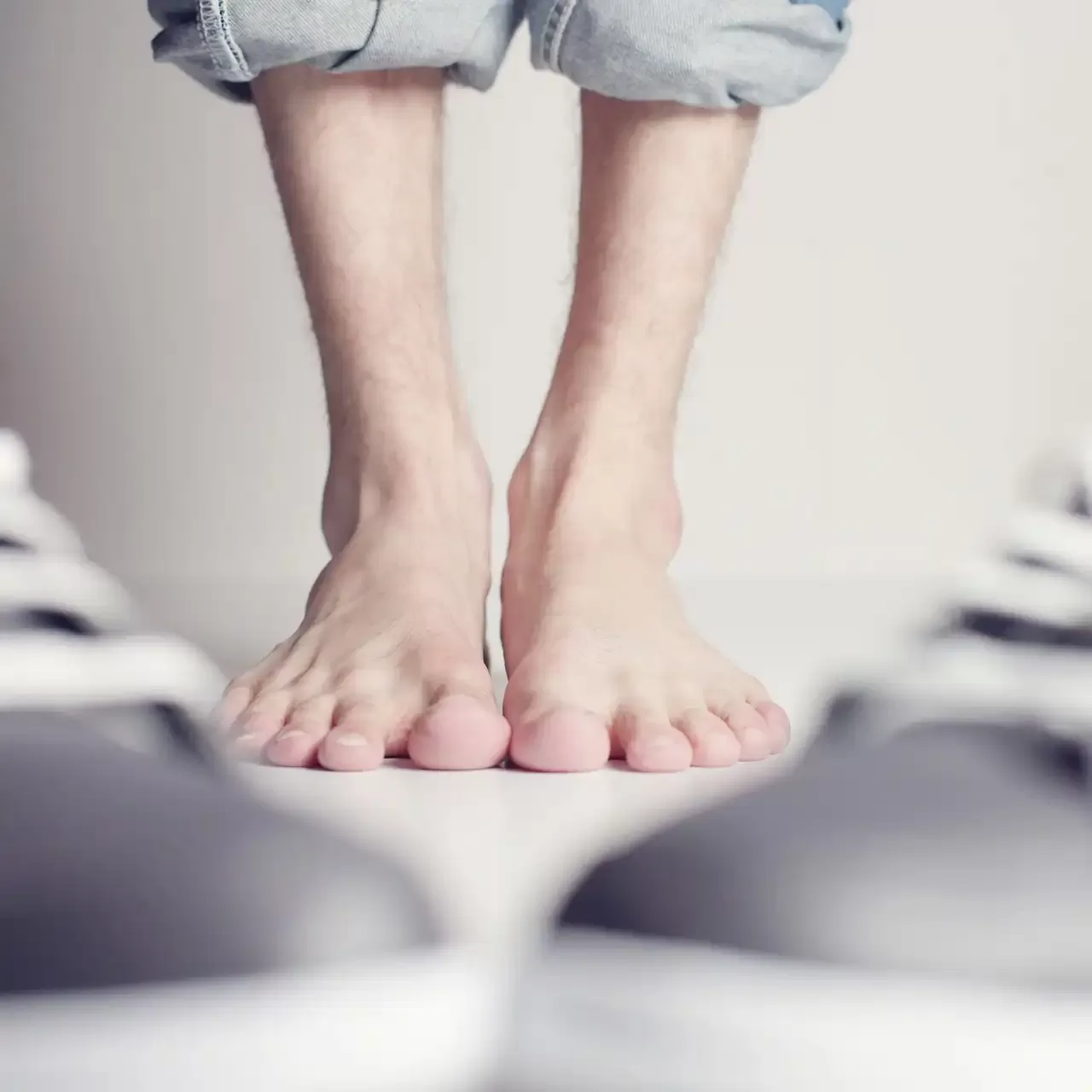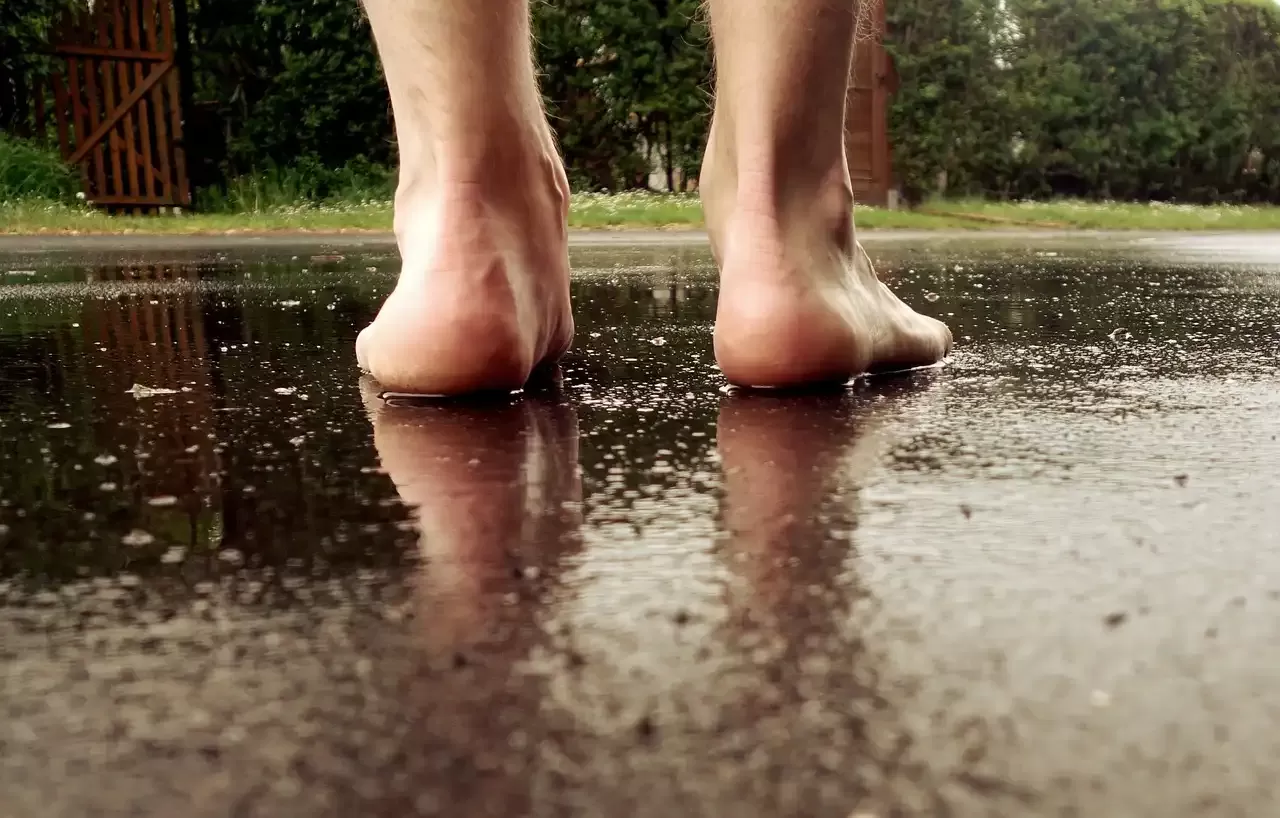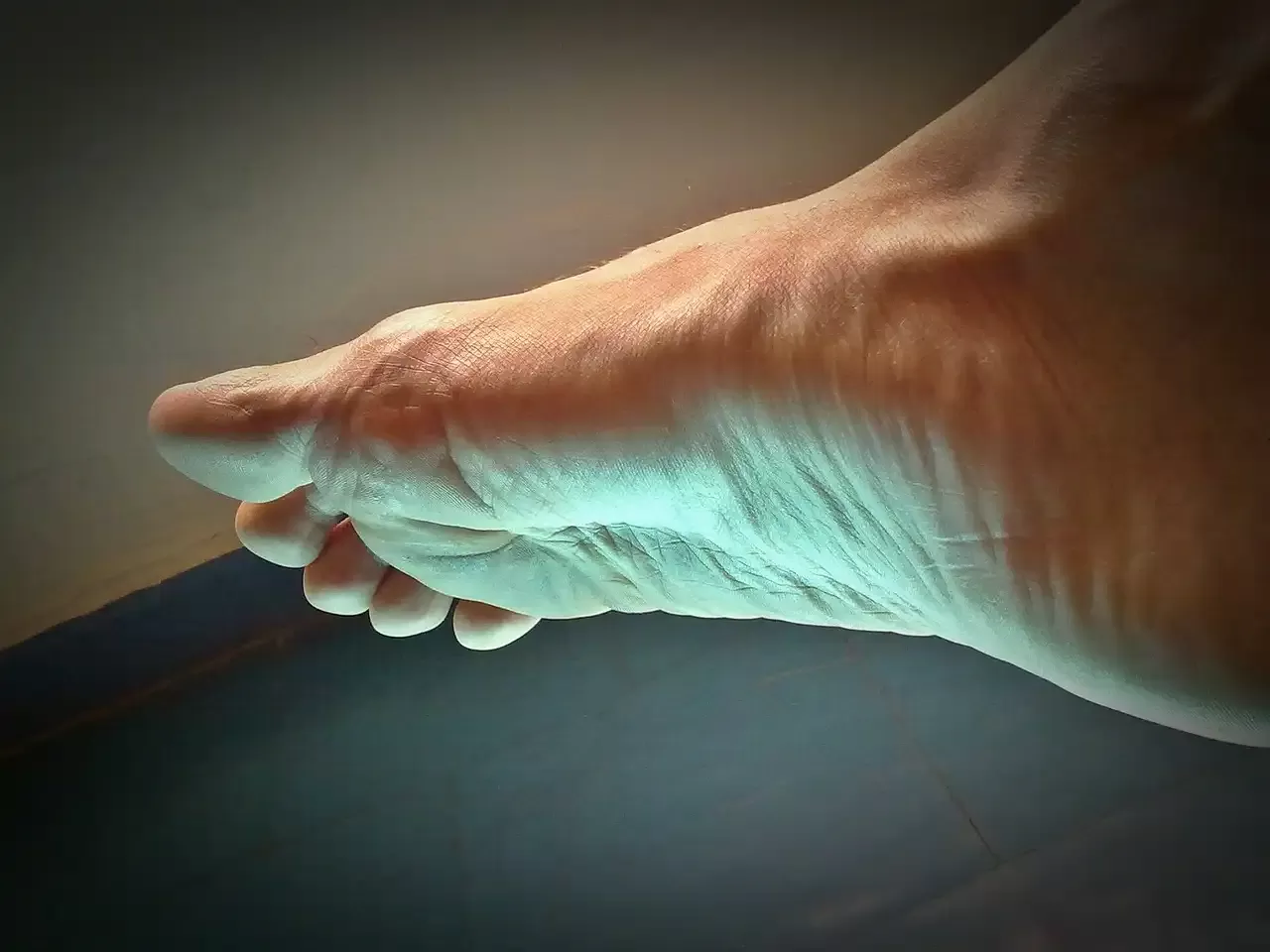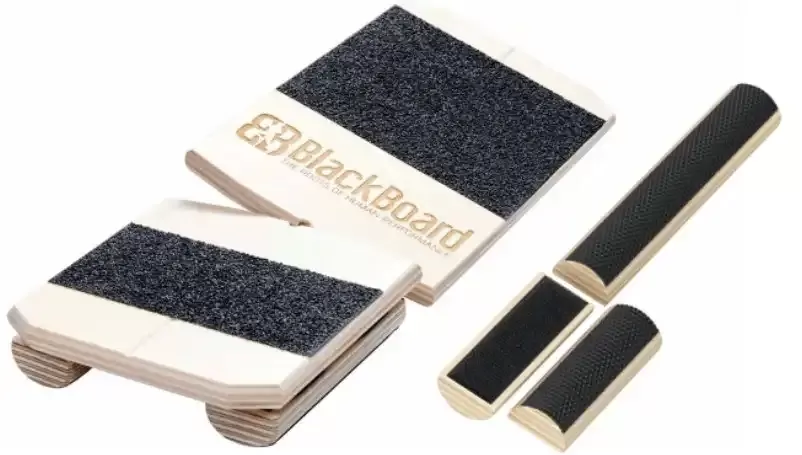Can Osteopathy Help with Plantar Fasciitis?
Are you experiencing pain and discomfort in the heel or bottom of your foot that usually strikes with your first steps in the morning?
If you're nodding in agreement, you might be dealing with plantar fasciitis, a common orthopaedic complaint.
At Wimbledon Clinic Osteopathy, we frequently address this painful condition with traditional and innovative treatments, tailoring our approach to each patient's unique needs. In this extensive guide, we'll delve into the effectiveness of osteopathy for plantar fasciitis and discuss the best treatment options available.
What is Plantar Fasciitis?
Before we explore treatments, it's essential to understand what plantar fasciitis is. Plantar fasciitis occurs when the thick band of tissue on the bottom of your foot, known as the plantar fascia, becomes inflamed. This band runs from your toes to your heel bone and supports the arch of your foot. Typically, symptoms include a sharp, stabbing pain in the bottom of the foot near the heel, which can be more severe in the morning or after periods of inactivity.
How Do Osteopaths Treat Plantar Fasciitis?
Traditional Ankle Manipulation and Taping
At Wimbledon Clinic Osteopathy, our treatment for plantar fasciitis starts with traditional osteopathic techniques like ankle manipulation and taping. These methods aim to reduce strain, support the foot, and improve biomechanical function. Ankle manipulation involves adjusting the joints in and around the ankle to relieve tension and improve mobility. Taping the foot can support the plantar fascia, reduce stress on the inflamed tissue, and help alleviate pain.
Extracorporeal Shock Wave Therapy (ESWT)
Moving beyond traditional methods, we also employ Extracorporeal Shock Wave Therapy (ESWT). Considered by many as the gold standard in treating plantar fasciitis, ESWT uses shock waves to stimulate healing within the plantar fascia. This non-invasive treatment enhances blood flow, accelerates tissue repair, and relieves pain. At Wimbledon Clinic, ESWT is particularly effective in chronic cases where other treatments have failed to provide adequate relief.

What is the Absolute Best Treatment for Plantar Fasciitis?
Determining the "best" treatment for plantar fasciitis can be subjective, as it often depends on the individual's specific condition and response to different therapies. However, at Wimbledon Clinic Osteopathy, we consider a combination approach to be the most effective. This strategy includes:
- Manual Osteopathic Techniques: Manipulation and mobilisation to improve joint alignment and function.
- Supportive Measures: Including orthotics and taping to decrease strain on the plantar fascia.
- Advanced Therapies: ESWT which has proven highly effective in reducing pain and promoting long-term healing. We use the Focused Shock Wave Therapy type which is more efficuent eefctive and painless in comparision to radial shopck wave devices.
Can an Osteopath Fix Feet?
Osteopaths are trained to treat musculoskeletal issues, including those affecting the feet. By assessing and treating the underlying causes of foot problems, such as poor biomechanics, muscle imbalances, and restricted joint mobility, osteopaths can help alleviate pain, restore function, and prevent future injuries. While osteopathy may not "fix" all foot problems permanently, it can provide significant improvements in most cases of plantar fasciitis.
What Professional Helps with Plantar Fasciitis?
When treating plantar fasciitis, you'll want a professional offering a comprehensive treatment plan. Osteopaths are ideally suited for this role, as they can perform manual therapy, prescribe orthotics, apply kinesiology taping (K-tape), and administer focused ESWT. These skills make osteopaths particularly effective in managing and treating plantar fasciitis, offering both immediate relief and long-term solutions.
Conclusion
If you're struggling with the pain of plantar fasciitis, it's essential to know that effective treatments are available. At Wimbledon Clinic Osteopathy, we provide a holistic approach that addresses the symptoms and the root causes of the condition.
By combining traditional techniques with innovative therapies like ESWT, we strive to deliver the best possible outcomes for our patients. Remember, you don't have to live with foot pain — help is available, and recovery is within reach.

Exploring the Other Causes of Heel Pain and the Importance of Comprehensive at the Osteopathic Clinic Evaluation
Various conditions can cause heel pain, and while plantar fasciitis is a common culprit, it's not the only one. To accurately analyse and effectively treat heel pain, a thorough evaluation by a professional is essential.
While many of our clients forgo expensive MRI examinations and decide to use focused shock wave therapy as a diagnosis and treatment due to the lack of risk, we must discuss The other potential causes of heel pain that necessitate careful examination and specific treatments.
Stress Fracture
A stress fracture is a small break in the heel bone (medically known as the "calcaneus"). Unlike conventional fractures that occur due to obvious trauma (like a twisting injury or a fall), a stress fracture usually results from overuse of the foot.
Risk factors for stress fractures include a history of stress fractures, low regular fitness levels, female gender with menstrual irregularities, lower body mass index (BMI), poor bone health, inadequate calcium/vitamin D intake, and poor biomechanics.
A stress fracture can sometimes mimic the symptoms of plantar fasciitis, but there are distinct features such as increased swelling, warmth, and redness in the heel, and pain that persists even while inactive.
Stress fractures might not immediately appear on an X-ray, necessitating other imaging studies like a CT scan, MRI, or bone scan for accurate diagnosis. Treatment typically involves immobilisation with a fracture boot, as remaining active can delay or prevent proper healing.
While stress fractures happen over time, a sudden strike can be more pronounced; typically, we will see signs of bony oedema on an x-ray, which isn't quite a fracture but more like a bone bruise. Signs of this are sensitivity to the side of the heel bone, which has been either striking, growing off-centre, or rolling into the ground/ side of the shoe.
Nerve Problems
Heel pain can also stem from nerve issues at various levels of the nervous system, manifesting as pain in the heel. Common examples include a pinched nerve in the back, like with sciatica, where treatment must target the underlying nerve issue rather than the foot. Another example is tarsal tunnel syndrome, which is similar to carpal tunnel syndrome but in the ankle and foot area.
Baxter's nerve entrapment, involving the 1st branch of the lateral calcaneal nerve, can cause symptoms like numbness, burning, tingling, and pain at the bottom of the heel. Diagnosis usually relies on a thorough physical examination, and an MRI may be required for further investigation. Treatment often parallels that for traditional plantar fasciitis unless specific nerve entrapment is identified.
Loss of Fat Pad Under the Heel Bone
The heel's fat pad cushions the bone against the stress of standing and moving. Thinning of this pad can occur due to ageing, certain medical conditions, or repeated cortisone injections into the heel, leading to painful sensations when walking. Treatment options include using gel cushions and orthotics or injecting a fat pad supplement like Leneva as a fat graft under the heel bone to restore cushioning.
While plantar fasciitis is a prevalent cause of heel pain, other conditions can lead to similar symptoms. These include structural issues like heel spurs and stress fractures, systemic diseases like arthritis, and mechanical problems such as loss of the fat pad or nerve entrapments. This diversity in potential causes underscores the importance of a comprehensive evaluation by experienced professionals at Wimbledon Clinic Osteopathy.
Such assessments ensure that each patient receives a tailored and effective treatment plan, addressing the specific source of their heel pain for the best possible outcomes. Read on for more notes about plantar fasciitis and self-management tips.

Understanding Other Additional Complications to plantar fasciitis
At Wimbledon Clinic Osteopathy, we see many cases of plantar fasciitis due to the use of one of the few focused shock wave therapy units in the UK. But as it works in chronic cases, many clients come in with pain for over six months. This means that secondary symptoms have added themselves to the original Plantar Fascitis, or the Plantar Fascitis is the last straw in a range of symptoms that have been ignored for many years.
Achilles Tendinitis
This condition occurs when the Achilles tendon, which connects the calf muscles to the heel bone, becomes inflamed. Typically triggered by overuse, especially in runners and athletes, Achilles tendinitis causes pain and stiffness along the back of the heel, which can worsen with activity.
Heel Spurs
Heel spurs are bony growths that develop on the underside of the heel bone. They can occur when the foot is subjected to constant stress for an extended period, often in conjunction with plantar fasciitis.
Although heel spurs may not always cause pain, they can exacerbate discomfort in the heel area and delay plantar fasciitis recovery. Clients with heel spurs typically take twice as many sessions of eswt to improve.
What's interesting about spurs is that we know they are caused by heel and plantar fascia cord stress, but they take years to develop. Yet many clients will come with plantar fasciitis and say they have only had pain for a few weeks. This spur presence illustrates that foot stress and adaptation by the body were ongoing before the pain/inflation in the fascia became apparent. Typically, this would be a great sign that the body adaption was working well or that the pain treatment of the client was terrific (weekend-end warriors). If you have heel spurs, you have likely been soldiering through some issues for quite a few years, and the case will likely require longer to recover. Although this isn't always the case, we certainly use it to assess the prognosis of our foot clients.
Bursitis
Bursitis involves inflammation of the bursae; tiny fluid-filled sacs cushion the bones, tendons, and muscles near joints. Heel bursitis can cause pain at the back or deep inside the heel, which can be severe, especially during activities like walking or running.
Stress Fractures
Stress fractures in the heel occur due to repetitive stress, overuse, or heavy impact on the foot. This condition is common among athletes who engage in high-impact sports. Stress fractures can cause severe pain and require significant rest and rehabilitation.
Tarsal Tunnel Syndrome
This condition arises when the tibial nerve is compressed as it travels through the tarsal tunnel on the inner side of the ankle. Symptoms include pain that radiates from the inside of the ankle to the heel and, sometimes, to the toes.
Systemic Conditions
Certain systemic conditions such as rheumatoid arthritis, gout, or diabetes can cause heel pain due to inflammation and degenerative changes in the foot structure. These conditions may also affect foot mechanics and lead to secondary issues like plantar fasciitis.

Top tips for managing an early occurrence of plantar fasciitis and free exercises:
Change shoes and cycle them:
Many of our clients haven't even changed their shoes, and foam degrades after 6 months of exercise. Padding is gone aware change the boots.
Also, each shoe does something different - provides support in various places. Some are less rigid and relieve pressure, while clients with unstable feet benefit from more stable shoes. There is scope for the two types of shoes as no one shoe has it all. So, get a few different designs and cycle them every few days.
Take a high dose of Vit D3:
If your not already taking vit d3 supplements, ideal dose 4000iu - 10000iu of vitamin d3 oil capsule (softgel) for 4-6 weeks (daerker non caucasian skin types may lean towards higher dose within range) - partially if there are signs of bone sensitivity, the bone is getting overwhelmed and can't repair - vit d3 is essential to bone repair. An article published by the Department of Health and Social Care in 2022 stated that Around 1 in 6 adults and almost 20% of children in the UK have vitamin D levels lower than government recommendations. Older people, the housebound and people from Black and South Asian communities are more likely to have lower levels of the vital vitamin.
This speaks for itself.
Engineered socks:
These are marked left and right, should be sourced in a crew cut, not pop socks and help support the ankle and arch of the foot to arrest extra stresses on the plantar fascia, as discussed previously.
Ankle strengthening rehab: Using bands to do inversion (internal scooping of ankle without knee moving and the the reverse to outside using yellow or red thera band) combined with ankle and foot balance rehab - use devices like the blackboard, which we use in the clinic. Not wobble boards!

Many clients we see have been give straight line rehab which doesnt really hit the bulls eye. It also healps identify weakness within the structure of the foot and ankle - if your weak somewhere this maybe why the plantar fascia has stayed for so long and not got better.